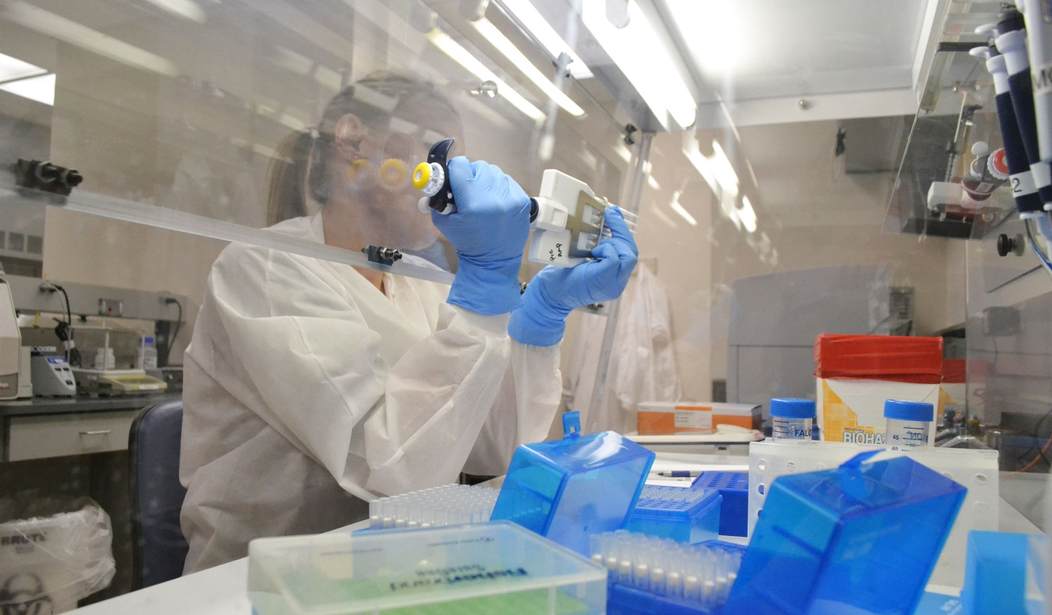Grace Wilsey couldn’t cry.
As a baby, she would lie limp in her parents’ arms, staring blankly into the distance. Her seizures wouldn’t stop and medical tests showed signs of liver damage. This was all before her second birthday.
Grace’s parents were beside themselves, as any parent would be. They traveled the country visiting specialists. They ran numerous tests, but no one could diagnose Grace’s condition.
“We’ve probably seen over 100 doctors,” Grace’s father said in 2014 when Grace’s symptoms were discovered.
None of them could provide an explanation.
Then, when their daughter turned two years old, the Wilseys tried something else. They had Grace’s entire genome sequenced.
A genome is an organism’s complete set of DNA, including all of its genes. “Genome sequencing” is the process of determining the complete DNA sequence. Think of it like creating a “genetic roadmap,” a complete blueprint of an organism’s genetic material.
What the genetic sequencing uncovered was astounding.
Grace Wilsey had a condition known as NGLY1 Deficiency. In short, the little girl’s NGLY1 genes were mutated. They were like typos in her genetic makeup.
One of the gene mutations prevented the little girl from producing tears. At the time, the disorder was so rare that only six people in the entire world had been diagnosed with it.
Now that the underlying cause is well understood, no time is wasted. Specific therapies can be developed to deal with this unusual genetic mutation.
Rewriting the Rules of Medicine
The story I told you above is just one of millions. It is estimated that some 280 million people suffer from a rare genetic disease. Many of them often live their lives undiagnosed.
Recommended
But there is hope on the horizon. The method used by the Wilsey family, genome sequencing, is experiencing exponential growth.
The cost of sequencing a human genome has plummeted. The speed of the sequencing technology has grown exponentially. And, thanks to breakthroughs in genetic editing technology, we are on the verge of a complete transformation in medical care.
Soon, we’ll be able to identify genetic diseases like cystic fibrosis or sickle cell anemia years before symptoms present themselves.
Millions of lives will be saved. Hundreds of billions of dollars typically spent on chronic medical care will be eliminated. And investors in a few key companies at the heart of this revolution stand to profit immensely.
Genome Sequencing for $100
The story of how rapid the improvements in genomic sequencing have been is one of the greatest examples of exponential growth, and exponential reduction in costs, in the history of technology.
One simple chart from the National Human Genome Research Institute explains it all. We can see the progression in reducing the cost of sequencing a human genome from $100 million in 2001 all the way down to less than $1,000 in 2016.

Overall, this progression is far faster than that of Moore’s Law, which accurately predicted that the processing power of microprocessors (semiconductors) would roughly double every two years.
From 2001 to 2007, the speed and reduction in costs of genetic sequencing had been moving as fast as Moore’s Law – roughly doubling in speed and halving in cost every 18 months.
But something amazing happened in 2008… Genetic sequencing began accelerating at a speed five times that of Moore’s Law.
Now, unless you’ve been working in the technology sector for a few decades, it might be hard to grasp the significance of this. But I’ve worked as a high-technology executive for 25 years. So take my word for it, nothing in the world of technology to date has developed this quickly. It makes the developments in semiconductors during the last decade actually look slow.
At this rate, the cost to sequence a human genome will drop to only $100 in the near future.
And that changes everything.
Health Insurance Starts to Get on Board
We are already starting to see early signs of engagement from the insurance industry at current price points, which are approaching $500.
As of November 1, UnitedHealthcare began covering “whole exome sequencing for patients where clinical presentation is non-specific and does not fit a well-defined syndrome.”
In other words, if a physician knows something is wrong, but can’t figure out what it is, UnitedHealthcare will pay to have the patient’s whole exome sequenced. This will positively impact more than 100 million Americans by providing coverage for this sequencing of rare or undiagnosed conditions.
Think of how much time and pain can be saved when a genetic sequence can tell us almost immediately what is wrong… rather than spending years and potentially millions of dollars pursuing ineffective or sometimes lethal therapies.
Genetic sequencing can often immediately identify the genetic cause of a disease so that physicians can focus on providing the most appropriate therapeutic regimen for the patient.
Almost Endless Applications
The world is just starting to scratch the surface of the kinds of applications that are possible using genetic sequencing. This includes genotyping, sequencing exomes, cancer screening, and whole human genomic sequencing; but what about…
- Screening parents before conception to ensure there are no genetic diseases that might be transferred to the child
- Replacing amniocentesis for a pre-natal test
- Immuno-oncology
- Therapeutic selection
- Data storage – yes, you can use techniques to store data on DNA
- Diagnosis of rare genetic diseases
- Embryo selection in in vitro fertilization
- Even oil and gas exploration
Because of this rapid increase in the speed of sequencing and the dramatic drop in the cost per sequence, we are going to see explosive growth in these new applications.
Current estimates put the global market for genetic sequencing at $5.1 billion. But by 2023, that market is expected to expand to $18.2 billion. That’s a compounded annual growth rate of almost 20% over the next seven years.
For investors, this is an opportunity that can’t be ignored. One way you could play this emerging trend is by looking at life sciences giant Thermo Fisher Scientific (TMO). It is one of the leading companies for genetic testing equipment.
Or for a more speculative play, Pacific Biosciences (PACB) is worth investigating. PACB specializes in genomic analysis systems and would likely profit as genome sequencing becomes a standard part of healthcare. But treat PACB as a speculation, and be sure to conduct your own research first.
And remember, we are still in the early days. There will be even more exciting ways to profit as genetic sequencing rewrites the rules of medicine.
Regards,
Jeff Brown
Editor, Exponential Tech Investor
And Official Wealth Creation Expert to Townhall Media
P.S. Another breakthrough medical technology I’m following is genetic editing. It may sound like science fiction, but it’s giving doctors the power to cure diseases like cystic fibrosis and Huntington’s permanently. And that’s going to make early investors very rich.
And I’ve identified three small-cap companies that are leading this new technology… and will reap the biggest gains in the next few years. Read more here.























Join the conversation as a VIP Member